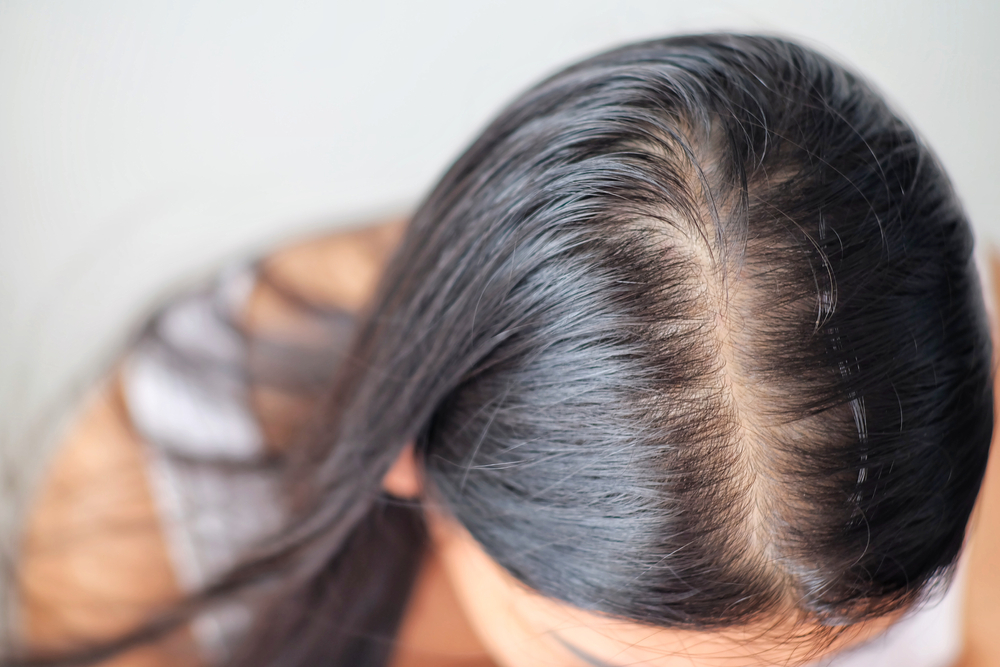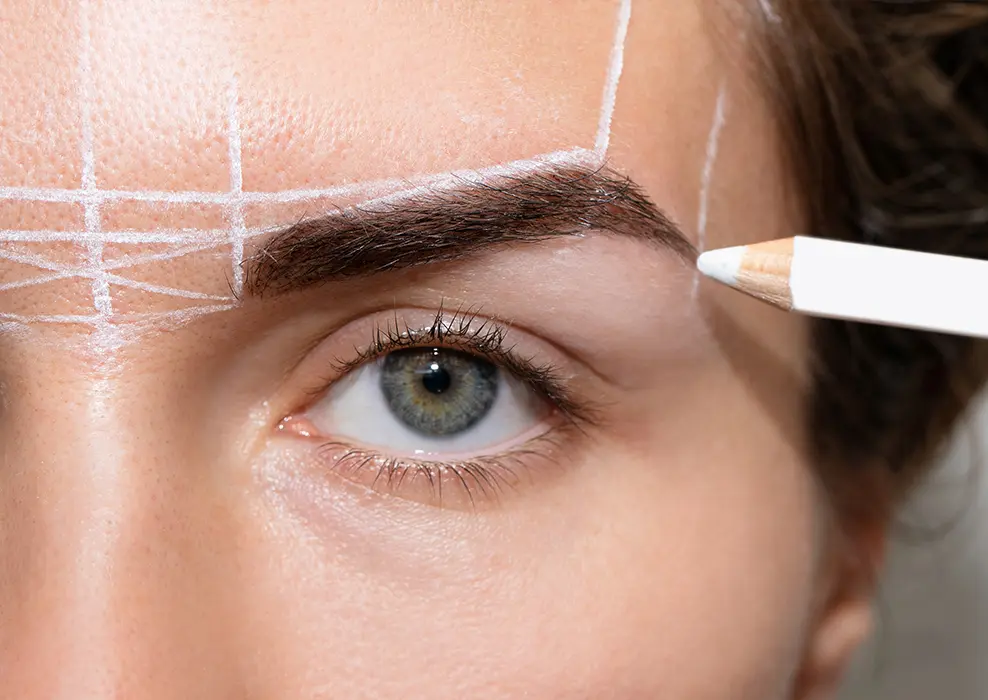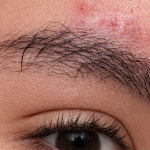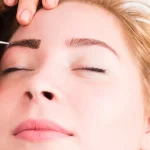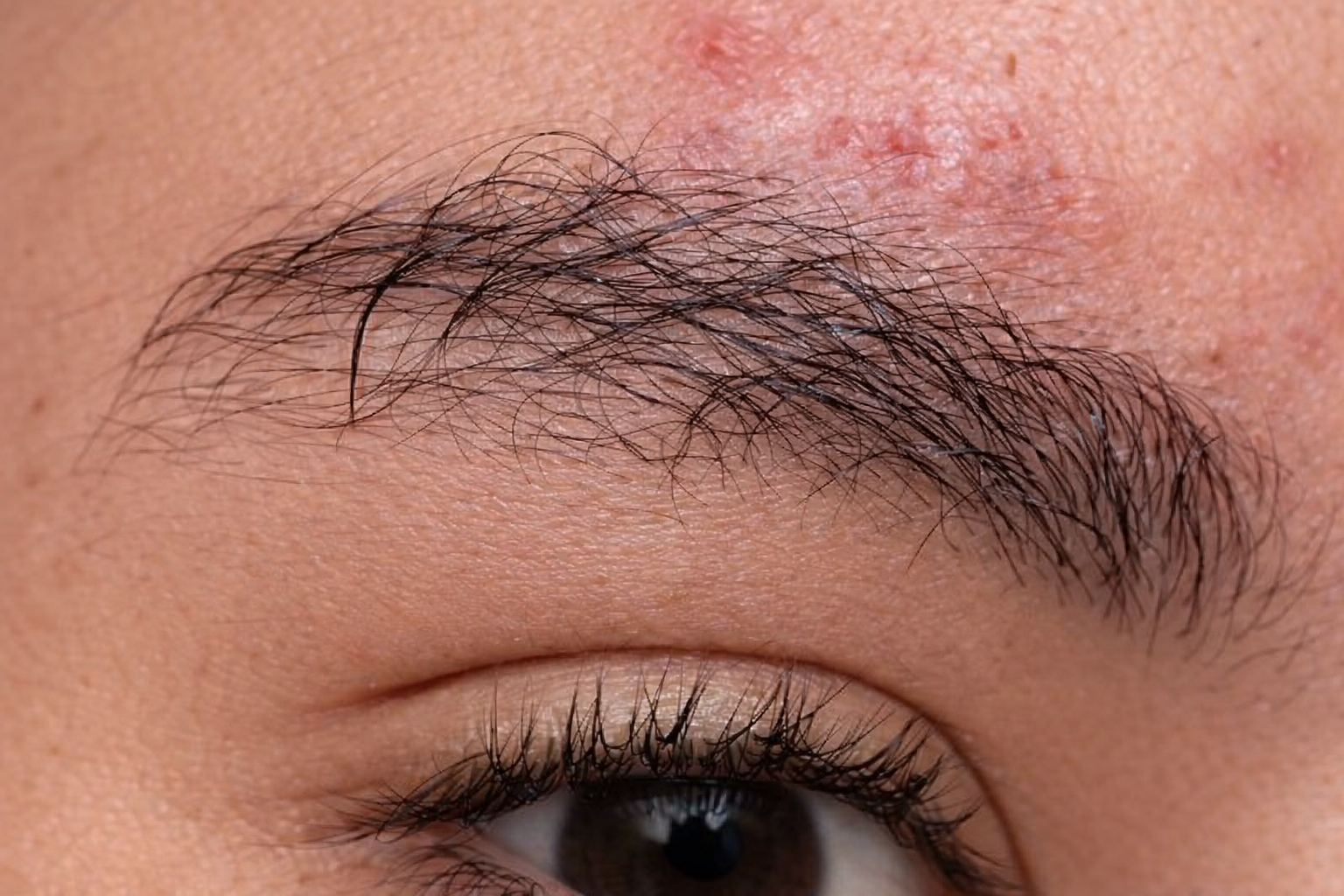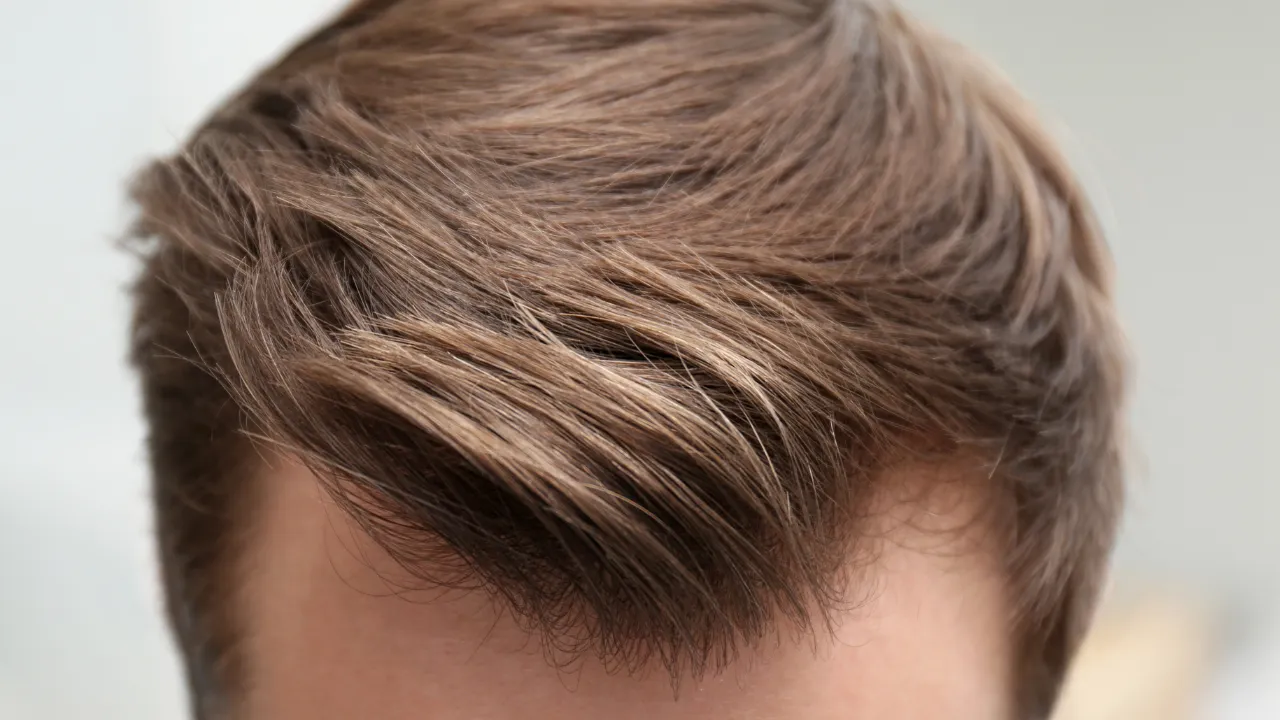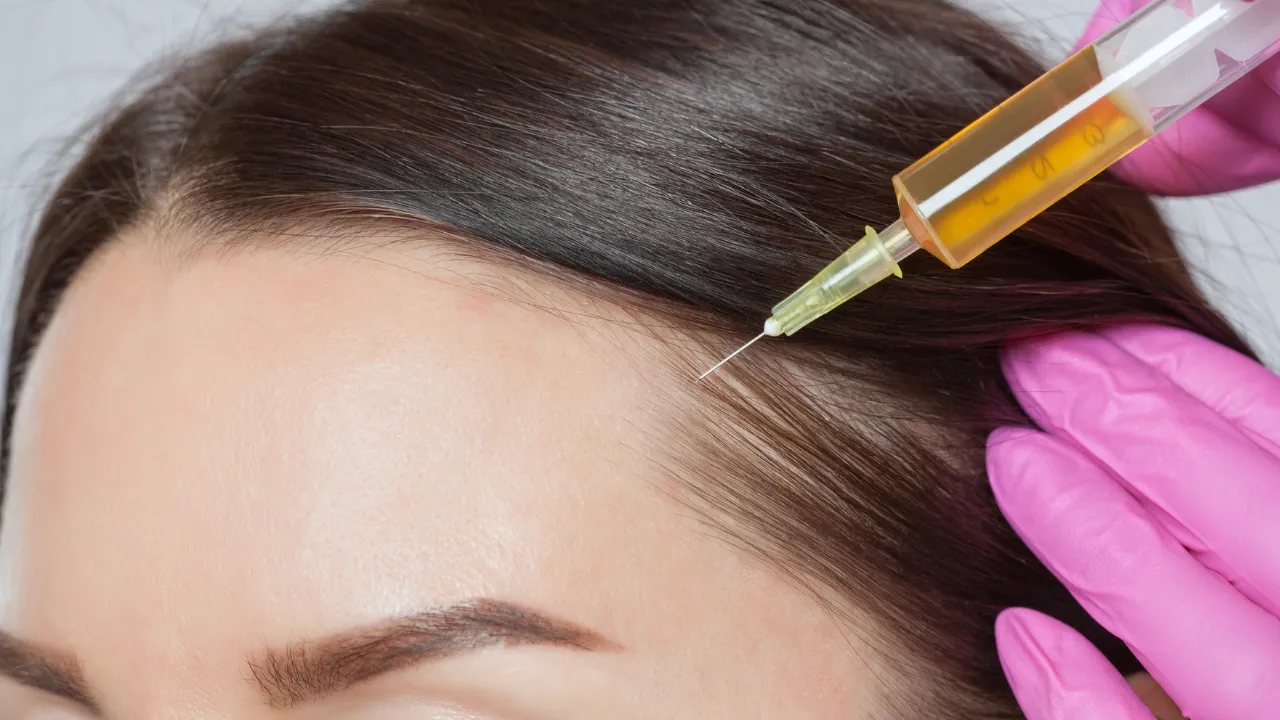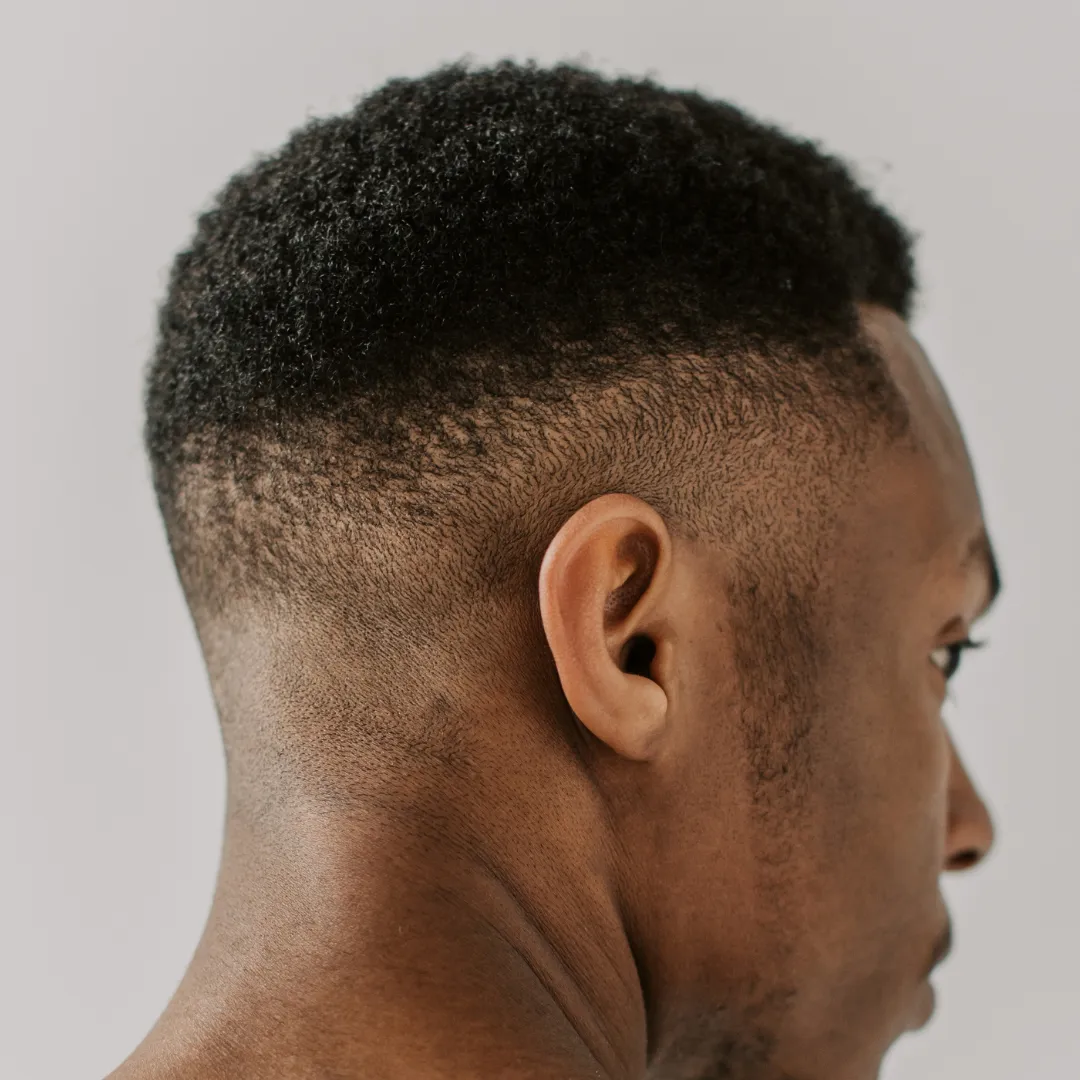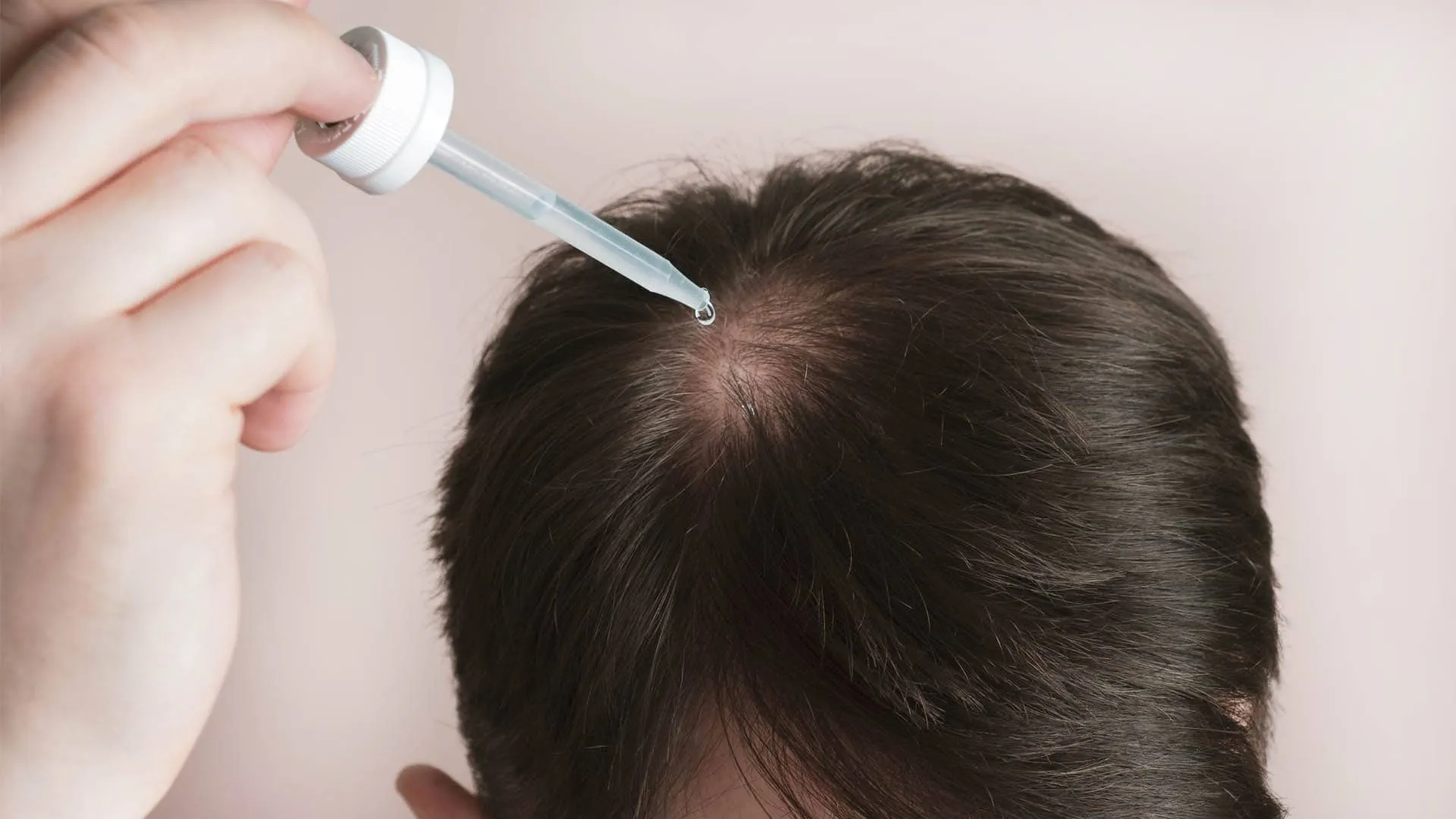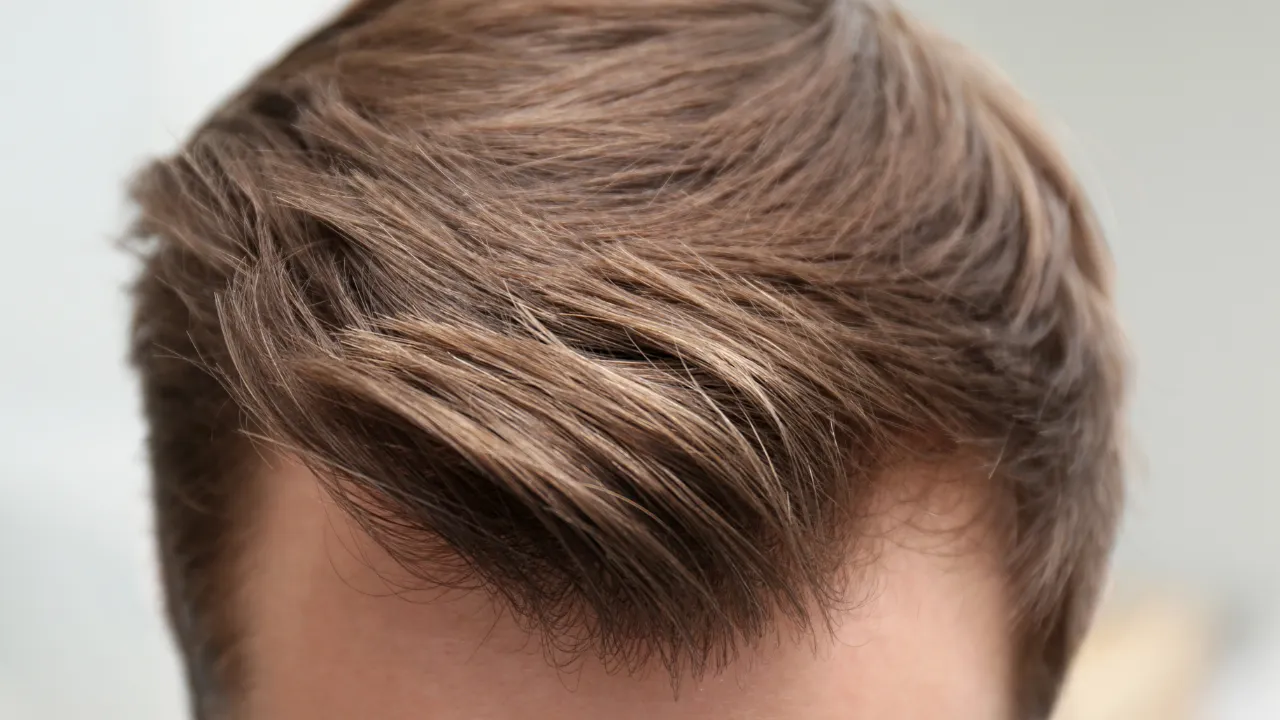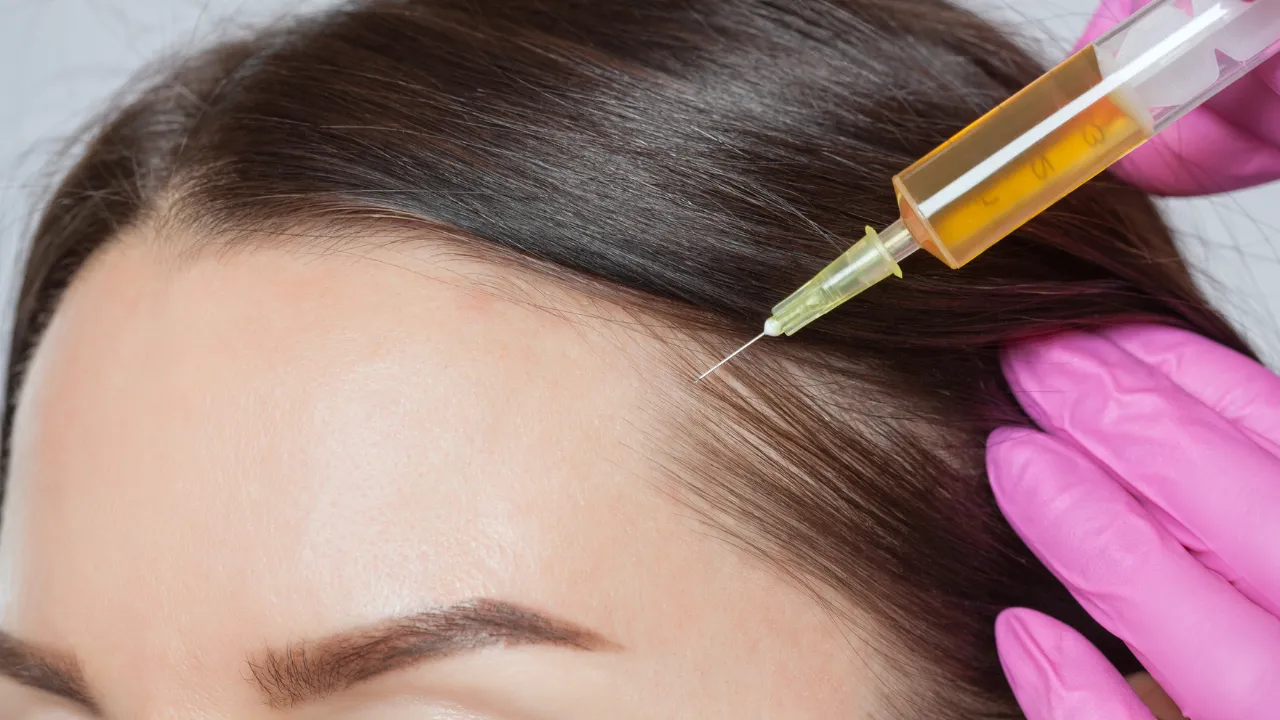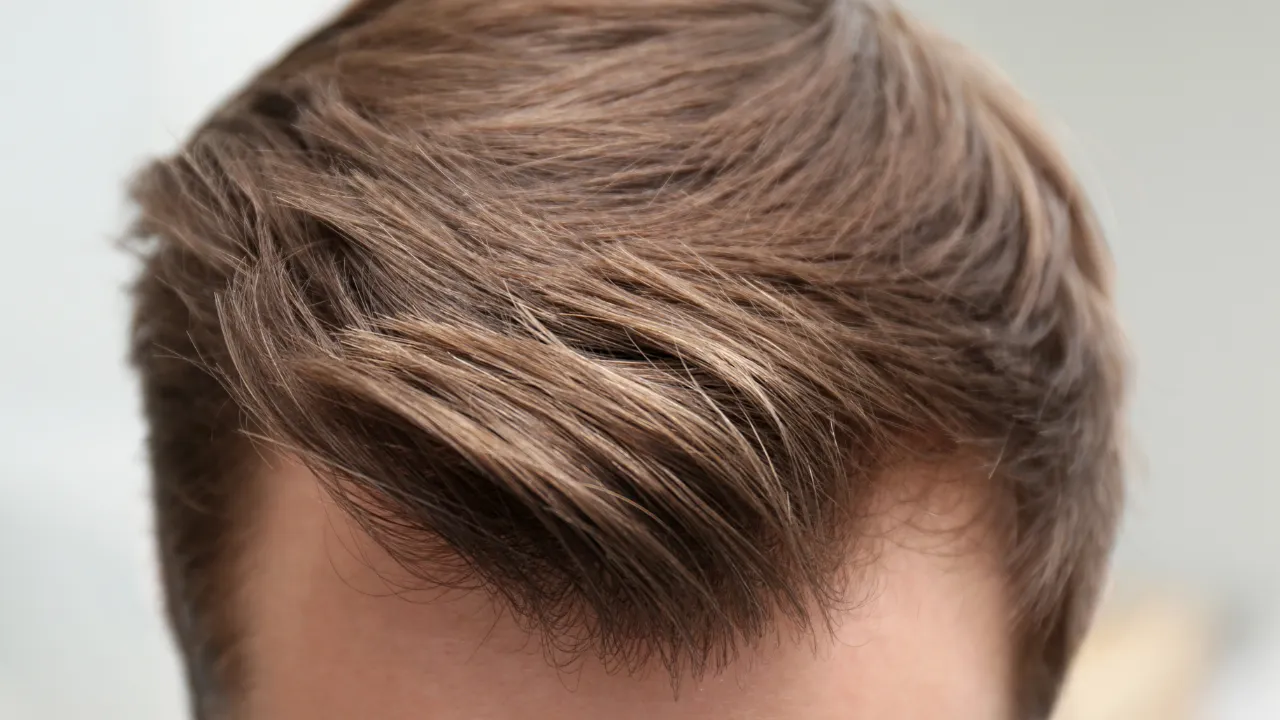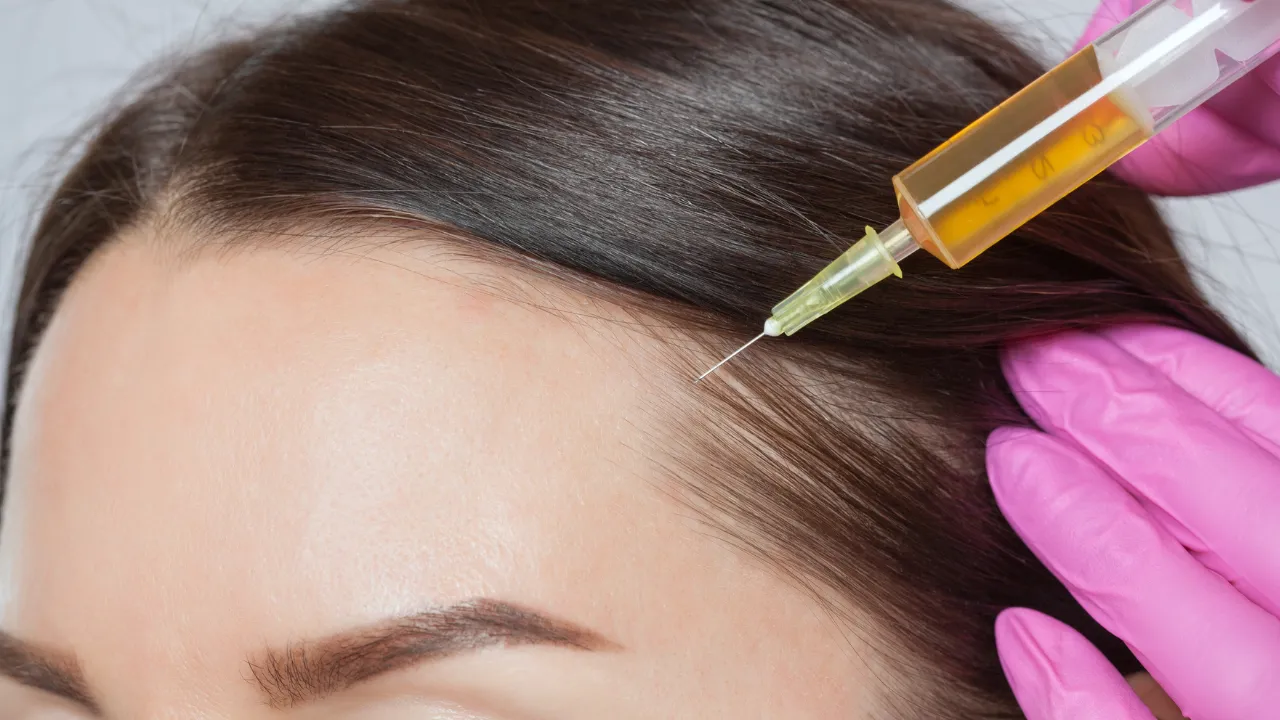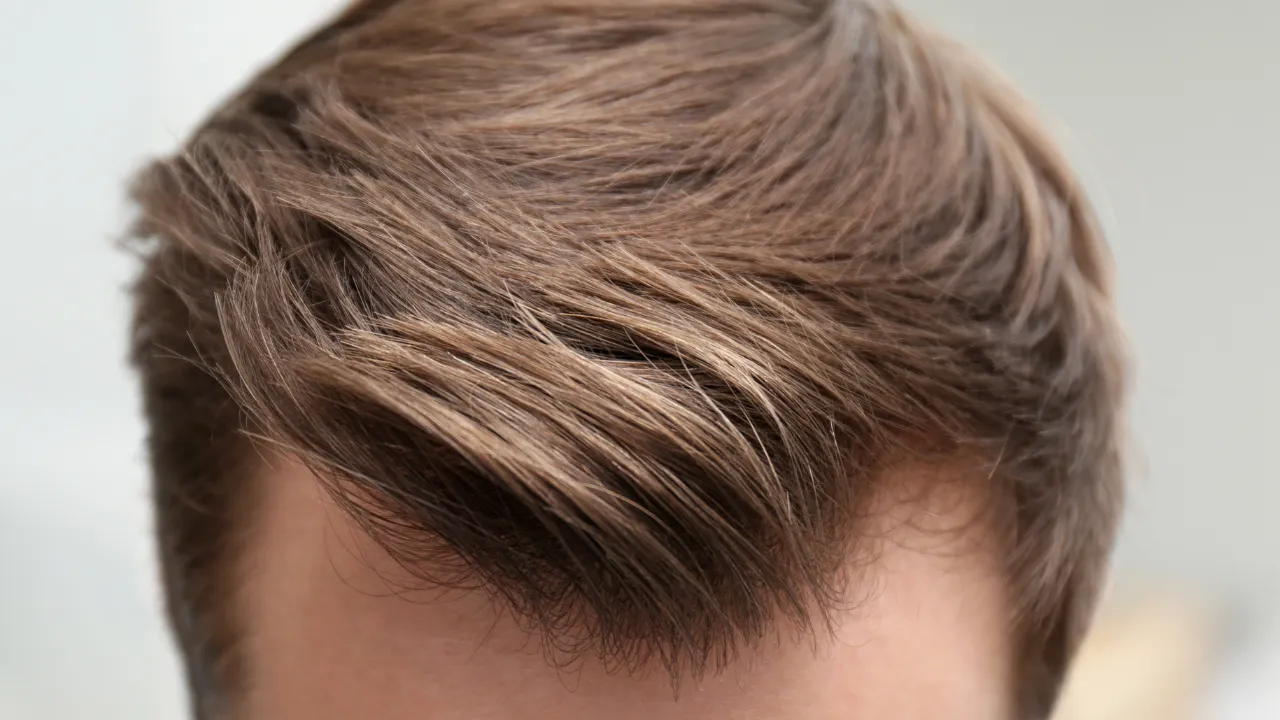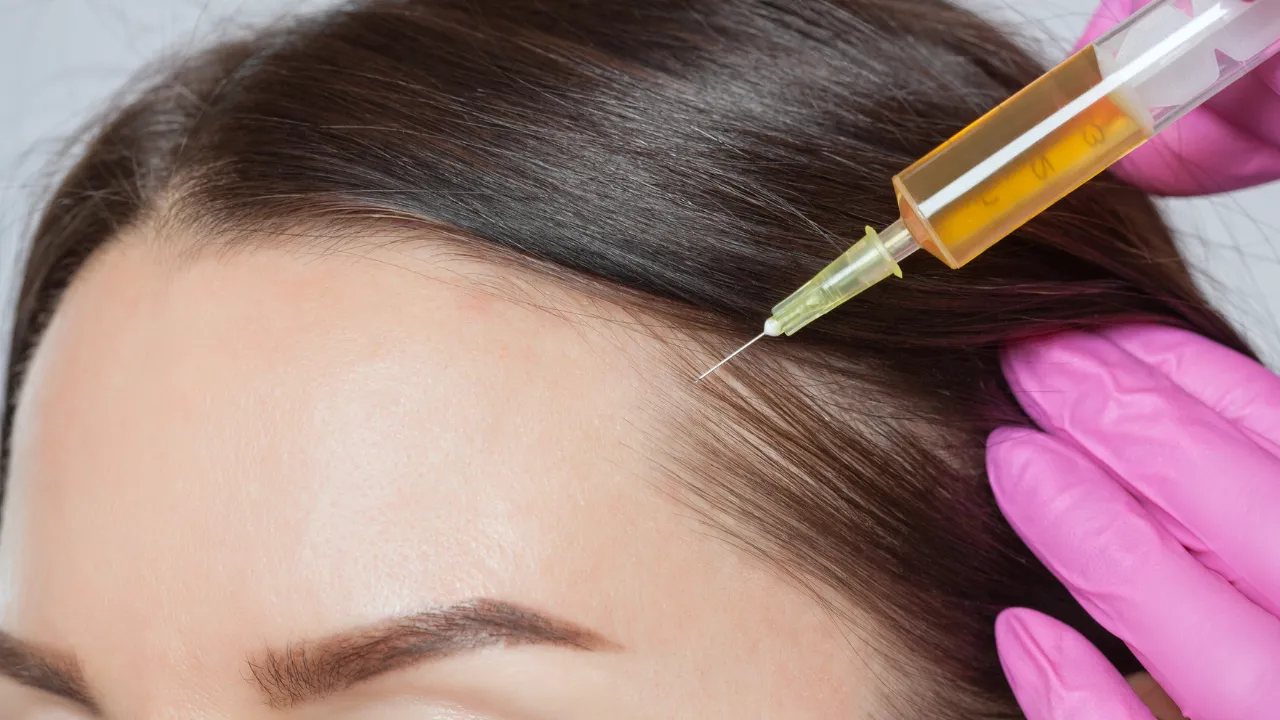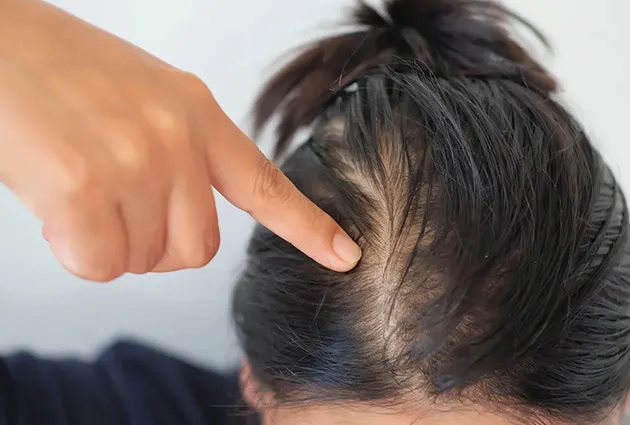Table of Contents
ToggleAt Kopelman Hair, we help patients recognize the early signs of hair thinning and guide them toward effective solutions. The earliest changes often appear gradually, but noticing them early makes a difference in treatment success.
The signs of hair thinning include visible changes in hair density, a wider part, and reduced volume. These are also early signs of hair loss, and while they may appear subtle, an expert evaluation from Dr. Kopelman can identify the cause and outline the right hair loss treatment.
Key Takeaways
- Early signs of hair thinning include a wider part, reduced volume, and more visible scalp.
- Different types of hair loss include genetic thinning, hormonal changes, and medical conditions such as alopecia areata.
- Men often develop male pattern baldness, while women typically notice diffuse thinning or a receding hairline.
- Treatment options such as minoxidil, finasteride, PRP, and ketoconazole shampoo can improve hair growth and prevent further hair loss.
- Scheduling a consultation with Dr. Kopelman early helps address excessive hair loss before it progresses.
Early Stages of Thinning Hair
How Do I Know if My Hair Is Thinning?
Common signs include visible scalp, thinner strands, and reduced volume. Many also notice hair falling more often when brushing or washing.
Is My Hair Thinning or Am I Paranoid?
Normal hair shedding is 50 to 100 hairs daily. Excessive hair loss or a widening part often signals early thinning.
Widening Part or Reduced Volume
A widening part or smaller ponytail suggests gradual thinning rather than temporary hair loss.
Extra Hair on Pillow or in Shower
Consistently finding more hair in the shower or pillow may indicate thinning hair.
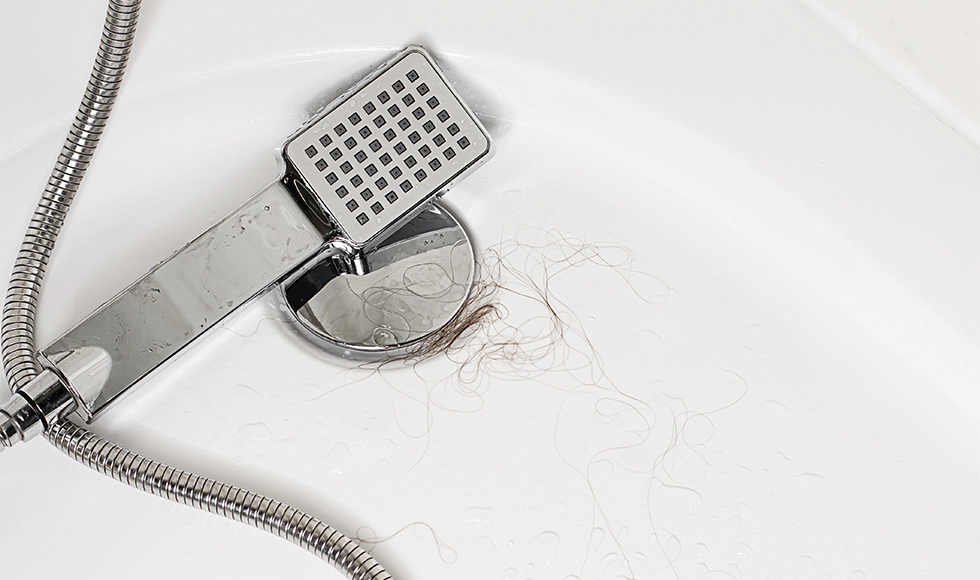
Signs Noticed During Styling
Thinner ponytails, bald patches near the crown, or more scalp showing in hairstyles are early warning signs of hair loss.
Signs of Hair Thinning in Women
Women often experience diffuse thinning. A widening part or lighter ponytail are common, making styling more difficult.
Signs of Hair Thinning in Men
Men often develop male pattern baldness at the temples or crown. These areas may gradually expand into bald patches.
Signs of Hair Thinning by Location
Thinning on Crown
The crown is a frequent site for thinning and bald patches.
Thinning on Top of Head
Both men and women may notice thinning on the top of the head, reducing hair growth.
Thinning on Scalp
Diffuse thinning across the scalp is linked to different types of hair loss, often tied to genetics or hormones.
Causes of Hair Thinning
Genetics and Aging
Family history is the leading cause. With age, hair follicles shrink and produce finer strands.
Hormonal Changes
Hormonal shifts from pregnancy, menopause, or thyroid disorders can cause temporary hair loss. In men, dihydrotestosterone (DHT) drives male pattern baldness.
Lifestyle and Health Factors
Stress, poor nutrition, or medications may accelerate thinning.
Other Medical Causes of Hair Thinning
Some conditions affect the immune system. Alopecia areata causes sudden hair loss when follicles are attacked. Chemotherapy and radiation can also damage hair follicles, causing temporary or excessive hair loss.
Self-Check: Early Signs at Home
You can often confirm thinning with a few checks:
- Notice if your part looks wider.
- Check if your ponytail feels thinner.
- Look for bald patches or more scalp under bright light.
- Track hair falling on your pillow or shower drain.
Thinning vs. Shedding: Key Differences
Normal hair shedding is temporary. Persistent thinning and excessive hair loss are linked to follicle health.
Thinning vs. Receding Hairline
A receding hairline usually affects the temples, while thinning may occur across the scalp. Both are common signs of hair loss.
Can Hair Grow Back After Thinning?
If follicles remain active, hair growth may return with treatment options. Severe damage may require advanced procedures.
What to Do if You Notice Thinning
Track changes with photos if gradual. If sudden hair loss or bald patches occur, seek care immediately to prevent further hair loss.
Treatment and Prevention Options
At-Home Care and Products
Balanced nutrition, stress control, and gentle care can reduce hair falling and support hair follicles.
Medical and Professional Treatments
FDA-approved medications like minoxidil and finasteride are effective hair loss treatment options. PRP therapy and laser devices are additional medical treatments that stimulate hair growth.
What Are the Big 3 for Thinning Hair?
The “big 3” are minoxidil, finasteride, and ketoconazole shampoo.
How Long Do Treatments Take to Work?
Most treatments take 3 to 6 months before visible improvement. PRP requires multiple sessions, and laser therapy also works gradually.
Evidence-Based Treatments
Minoxidil and finasteride are FDA-approved. Ketoconazole shampoo has been researched for scalp health and follicle support.
Risks and Side Effects to Consider
Some treatments may cause irritation or hormonal changes. Professional evaluation ensures safe care.
When to See a Hair Specialist
If thinning continues for months, see a specialist. Dr. Kopelman and the team at Kopelman Hair provide expert evaluation and advanced treatment options.
Delaying evaluation may limit medical treatments and leave advanced procedures as the only choice.
FAQ about Signs of Hair Thinning
How do I know if my hair is thinning?
Can stress cause thinning?
Is thinning permanent?
What is the best first step?
What vitamins help with thinning hair?
Take the Next Step
If you are noticing signs of hair thinning or excessive hair loss, the most effective step is to seek an expert evaluation. At Kopelman Hair, Dr. Kopelman and his team offer trusted, personalized treatment options to restore hair growth and prevent further hair loss. Schedule a consultation today to take control of your hair health with professional guidance.


